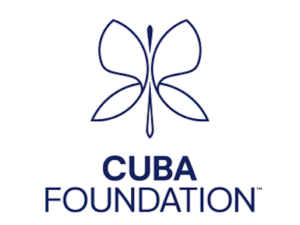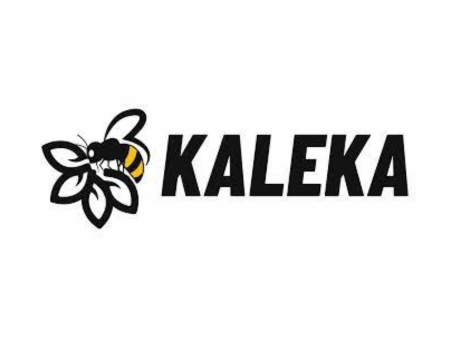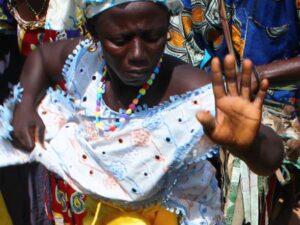
Interview with Gustavo Arnavat (Cuba Foundation)
The Cuba Foundation is a philanthropic platform that inspires, promotes, and facilitates sustainable development projects that directly benefit the Cuban
Kaleka works towards the sustainable management of Indonesia’s landscapes and seascapes for the benefit of local and indigenous communities. It is a women-led organization committed to upholding human rights and protecting the environment.
Silvia Irawan of Kaleka spoke with Jessica Kantor on January 31, 2024. Click here to read the full interview with insights highlighted.
Jessica Kantor: Can you introduce yourself, the organization that you are representing and the problem that you all are working to address?
Silvia Irawan: I’m Sylvia, and I’m the Executive Director of Kaleka. Kaleka is a national research organization that does research on systemic social and environmental problems. We mostly collaborate with formers as the focus of our work is to find solutions to problems that impact them. We test how solutions might work, then once it’s actually working, we partner with local governments to bring that to a larger scale.
We have an organization of about 60-70 people — all Indonesia-based — that work in central Kalimantan, the palm producing district. We also work in West Papua, where the majority of the forest frontier of the country remains; around 70-90% of the land there is forest.
In Indonesia, the majority of the population are farmers where they’ve used traditional farming practices of using fire to clear the land after growing their crops. But with climate change, they can’t continue doing that because if it’s done during the hot season, it can spread and result in fires so large that even neighboring countries can experience the resulting smoke.
They’ve now been left in a situation where in the country’s effort to reduce fires, they’ve banned it and farmers are left with no other options since they’ve been using fire to clear the lands for generations. We’ve come in to work with them in finding other methods and technologies that can do that.
We see farmers as the heroes on the frontiers to protect and restore landscapes at scale, and we want to focus our work on that. We’re trying to find a working model with farmers that can be replicated at scale. Our idea considers a jurisdictional approach. Jurisdiction is a landscape or administrative boundary where local governments have the power to issue regulations and public policies.
Given what we’ve learned from farmers, we speak to the government to convince them to change systems because we’ve found that a lot of time, issues faced by the farmers need to be solved by the government. It’s how we’re able to upscale solutions for the entire landscape. We’re talking about hectares of land that need to be taken care of in these districts. Districts can be as large as a small country, like Jamaica.
Our dream is for entire districts to have regional economies that are driven by sustainable products where nature-based industries focused on preserving biodiversity and standing forests — from ecosystem restoration, forest conservation, tree planting — can generate employment and drive economic growth.
Jessica Kantor: How are you engaging with all of the touch points in this process –the farmers, solution providers, NGOs, governments, etc?
Silvia Irawan: Our work is centered on collaborative research with the community, so working with them is our focus. For example, in central Kalimantan, there are big industries of oil palm producing districts. More and more, farmers are participating in the supply chain not only because of the fire ban but because they are seeing that it’s actually profitable.
But the farmers participating in this supply chain could become drivers of deforestation. So, we offer certification processes where we teach farmers on best practices. They learn that they cannot encroach through the forest and that they need to follow legal channels that preserve biodiversity. We started with about 600 farmers and have reached 4,000 to 5,000 farmers, so it’s really changing the practice.
Our staff works together with farmer groups. Sometimes, we help set up the group if there are none, for instance, with indigenous people. We encourage them to be part of a group. Once they’re certified as using sustainable practices, they can actually sell the credit to get a premium or they can get paid for changing to more sustainable practices.
After helping these farmers with certification, we started seeing the downstream industry; cosmetic and personal care products that use palm oil are interested in investing in the sustainable products in the region, so they’ve also begun investing in our project.
With money that we receive from that sort of commitment from downstream companies, we can put the money into what we call ‘payment for environmental services’. For every hundred hectares of forest that is preserved by the community, we can provide one hectare of high-value commodities. We’re able to support the process of tree planting, ecosystem restoration, and all other things. A dependence on palm oil would be really bad — not only in causing deforestation — because of the price fluctuations. It’s important to diversify.
Otherwise, we connect with donors, funders, buyers, and the government as well. A common problem is that many farmers don’t have the legal documents necessary to get their certification, so we work with the governments to issue that paperwork fast and free.
Jessica Kantor: How are you working on systemic change specifically?
Silvia Irawan: When working with these farmers, you really need to understand their challenges. At the beginning, our focus was on working with low-hanging fruits; usually farmers that already have legal documents but still have some other documents missing. In doing that work, we learned which unit of the government processed those documents. So, we’d talk to them and convince them to issue new regulations to make it easier because otherwise there’s confusion. Information dissemination is not perfect.
Another thing we do is what we call this a jurisdictional approach where we promote having everyone within the landscape work together. For example, in central Kalimantan, we don’t only work with the 4,000 to 5,000 farmers, we aim to have the entire district take care of the farmers. That means we need local governments to change how they work — how they issue regulations, what infrastructure needs to be in place — anything that requires their help since farmers cannot solve all the problems on their own.
Another example is our work with farmers who produce patchouli. Patchouli is an essential oil product that is used in the perfume industry. Indonesia is a major producer of patchouli, yet in our work with farmers, we realized that it’s impossible to find good seedlings.
Working with the national government in Jakarta and local governments, they issued specific regulations needed for a nursery to be built for local communities to have access to promote the production of patchouli especially since this plant can be integrated with forests and can be grown in agroforestry settings.
That’s a more systemic approach to the problem because if we only worked with small pilots, those pilots may never fail but they also never scale. Small pilots may solve some problems, but you don’t end up being able to solve the problem for all the other farmers that are out there that cannot access the same services. So, the government needs to have public policy changes that allow everyone in the region to have access to the same services to also change their practices.
Jessica Kantor: How are you measuring success?
Silvia Irawan: Because we work with a lot of consumer goods companies who are purchasing products from the region, they also want the impact data to include in their sustainability reports. We measure impact by hectares of areas being preserved by local communities, ecosystem restoration that has been achieved, and number of farmers that we’ve certified to adopt sustainable agricultural practices.
Jessica Kantor: What are some things that you tried that didn’t work as planned, and what lessons did you learn from that?
Silvia Irawan: We do action research; that means helping the farmers find solutions to their problems is the main goal. We stay in regions for many, many years; when they would have problems, we would start big scale community-based or village-based sustainability programs. For every hundred hectares of forest being preserved, we provide them with one hectare of high-value commodities production as a financial incentive for forest conservation.
The challenge we have had from the very beginning was that uptake of the program wasn’t as we expected. Theories say that if the standing forest has X value, everyone would be very excited about doing this, but that wasn’t really the case. We spent a lot of time trying to understand why local communities weren’t participating in the process.
After one year, we evaluated and our partner local governments wanted us to show a success model of a village to show what this work meant. They wanted to show what happens after we give them the high-value commodity. For example, coconuts. Would we buy their coconuts? Would we help them process those coconuts? What is the economic benefit for the community in that process?
We’ve just been trying to learn from that process and revisit our approaches. The beauty of working in a region for many years — thanks to our funders — is that we were able to start small, then grow to cover the entire district. We now work in thirty villages, and are trying to cover another seventy of the one hundred village district.
When we fail, we keep going back to it, very curious why. If the theory says one thing, but it doesn’t work, what other approaches are possible. It takes time, but eventually we start seeing results.
For instance, in West Papua — that has 70% to 90% forest coverage — and central Borneo, we have oil pump as the commodity. When you convince people to change their practices, they need to see an immediate benefit from that because there are buyers who want to buy sustainable products.
But in West Papua there’s no commodities. When we started working in a district, they produced nutmeg. It’s a different species than what is harvested in other regions of Indonesia because those are usually cultivated while these were harvested in the forest. The indigenous people have a connection with the nutmeg production; it’s part of their identities and their pride.
In order for us to be able to protect the forest, the nutmeg value needs to be high enough so that communities won’t consider planting oil palm there that could cause deforestation.
We had to study and map the area to understand the complex indigenous rights on who had the rights to harvest the nutmeg from the forest. This was complex because anytime they had a big expense they would put a chunk of land as a collateral to a loan shark. They don’t have a full understanding of how much land they have and how much it’s valued, so these loan sharks have had more bargaining power than the local communities and kept taking their land since the local communities cannot pay them back.
We started mapping the land with the local communities, so they can go around their farm and measure the hectares they own and calculate how much nutmeg they can harvest. If they need to put that into collateral one day, they’ll know exactly how much the value is of their land. We mapped almost six hundred farms there.
Farmers also want a good price for their products, so we will often research the product. We learned that their nutmeg was considered a completely different and inferior product to the type produced by their peers in Indonesia. It doesn’t meet the standard, but it turns out it has a different type of value. We work with many research organizations to figure out what could be a high value commodity coming out of the forest of this nutmeg. That can take many, many years.
We figured out that it could potentially be used by the perfume industry, but it was in competition with other types of nutmeg. We tried for, maybe, five to eight years to send samples to all the essential oil companies, but there was a problem with the chemical composition. We don’t want to just leave after we fail, so we keep pushing through. Fortunately, our donors actually trust in us so that we can keep pushing until we have a solution for that problem.
Jessica Kantor: Do you have some tips on how organizations can co-create or co-own the process with the organizations supporting their work?
Silvia Irawan: We don’t know what the problems are until we try to solve them with the local communities. When we talk to communities, we ask them what they need. That’s always the start of our work. We share what we know about trends in terms of what products companies are buying and from where, and give them the option to address the potential that they are risking being cut off from the supply chain. Then, we offer to support them in addressing that problem. That can look like doing the certification process with them or mapping out their lands. It’s only then that we offer them the opportunity to change their practices. That involves a lot of discussions. We talk with them about who would pay for those changes and the possible benefits they’ll get.
We have to convince them that we are not just there for a project, we’re there to hold their hand, be with them — live with them — through this process. A lot of our people are actually living with the communities so that they can take the time they need to decide on the changes they want to make. We also have to manage the donors’ timetable expectations, but we’ve been able to figure that out because they also want to see these changes and achieve their targets.
Last thing is that people see our work with their peers. Usually, after you find a certain champion in the region, suddenly everyone wants to work with us. They come with the requests for help, but our model is still putting them in the driver’s seat and letting the farmers do the process themselves. There are sets of farmer groups and they are the ones talking and negotiating with the buyers. They are smart people; they just don’t usually have the opportunities to speak with buyers or outsiders directly. As soon as they have that, you can see that they feel empowered to lead the process themselves. After two years, they’ll usually be doing it themselves. Some have even gone on to become parliament members, so we’re really proud to call them family. It’s what makes going to work exciting everyday.
Jessica Kantor: What do you think is most needed from other partners or actors that are working in the space to advance systems level change?
Silvia Irawan: If there’s an outsider or supporter out there, usually we are talking about trust. We’re working on a lot of new stuff and have a big dream of being able to cover a lot, so people can often have doubts. This work requires many partners sitting together and working together on problems that we can’t handle alone. Government, industries, and other actors need to all come in and work together. Building trust is really crucial.
The other one is actually telling stories. We work really hard on the ground, and sometimes, we don’t have the time to tell the stories and tell the solutions for the particular problems we study. Even though we aim to publish our studies in peer-reviewed journals and things like that, it can still take five to six years before we can publish something. It’s really important to have someone help us tell these stories.
Jessica Kantor: How do you see your work evolving over the next five years?
Silvia Irawan: Our aim is to scale to address systemic problems, but to make a meaningful impact, we have to focus that scale at the district level.
For example, Jamaica has one million hectares or 10,000 square kilometers. That’s a big area with a bi population. To tackle the transformation of the economy in that district, the local communities within that district need to see the benefits of having sustainable practices, conservation, and ecosystem restorations. You can’t just have one or two small projects with one or two villages or farmers groups to change those practices.
To achieve systemic change, you really need to change the economy of a district. That requires large scale interventions where everyone in the community understands concepts like sustainability. If they don’t see the benefit, they won’t understand nor demand the government to support them in those practices.
Our dream is to really figure out how all these small scale projects can add up to cover the whole district that allows and promotes economic growth. For instance, if you plant different species of trees or do ecosystem restoration, you would need to do agroforestry to understand what has very high value so that the standing trees actually have enough value for local communities to compete and make sure the standing forest is more valuable than other commodities like palm oil and others. Our vision is to have a model in which one region can move away from extractive industries to become a 100% restorative agriculture ecosystem restoration while also generating income for everyone in that district. It has to be big enough for people to want it and vote for it. Once we have that model, it’ll be easier to replicate it in many other places.
Jessica Kantor: Is there anything that we didn’t talk about that you think is really important for others trying to either replicate what you’ve done or just kind of learn from anything that’s particularly important from your work?
Silvia Irawan: Convincing consumer good companies to invest in regions other than their supply base is actually almost impossible. There is no business case for them, so I kind of understand that. There needs to be solutions for many of these regions that are not producing commodities that are of interest in global trade. We need support for this work regardless of the region. We’re figuring out how to bridge that by introducing forest-based products to the market.
Many of our successes are made possible by consumers demanding sustainable products. We can invest back into palm oil producing districts because there is demand for sustainable palm oil. But the problem is that we work with heavily forested districts that do not have any other potential products; like most of these consumer goods companies, they are willing to invest in their supply base. We have an alliance of small organizations that are now trying to replicate this with many other grassroots, local, and sub-national NGOs currently working in remote places in Indonesia, but we have issues about fundraising.
Click here to read the full interview with insights highlighted.
Jessica Kantor is an independent journalist specializing in health, human rights, and social impact. Her work can be found in Fast Company, Healthcare Quarterly, The Las Vegas Review-Journal, and others. She is a living kidney donor.
* This interview has been edited and condensed.
Find other social innovation organizations working with indigenous communities.


The Cuba Foundation is a philanthropic platform that inspires, promotes, and facilitates sustainable development projects that directly benefit the Cuban

Imperative 21 works to reimagine the relationship between the private sector, government, and civil society to improve outcomes for the

There is nothing more difficult than changing entrenched cultural practices, especially those as shrouded in taboos as female genital cutting.

The Center for Global Health Science and Security at Georgetown University is a multi-disciplinary team that develops evidence for action,

Verité partners with businesses, governments, and civil society organizations to identify labor rights violations in supply chains. They support workers’

Panorama Global supports changemakers working on a wide range of social issues by facilitating collaborations. Gabrielle Fitzgerald of Panorama Global